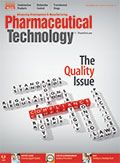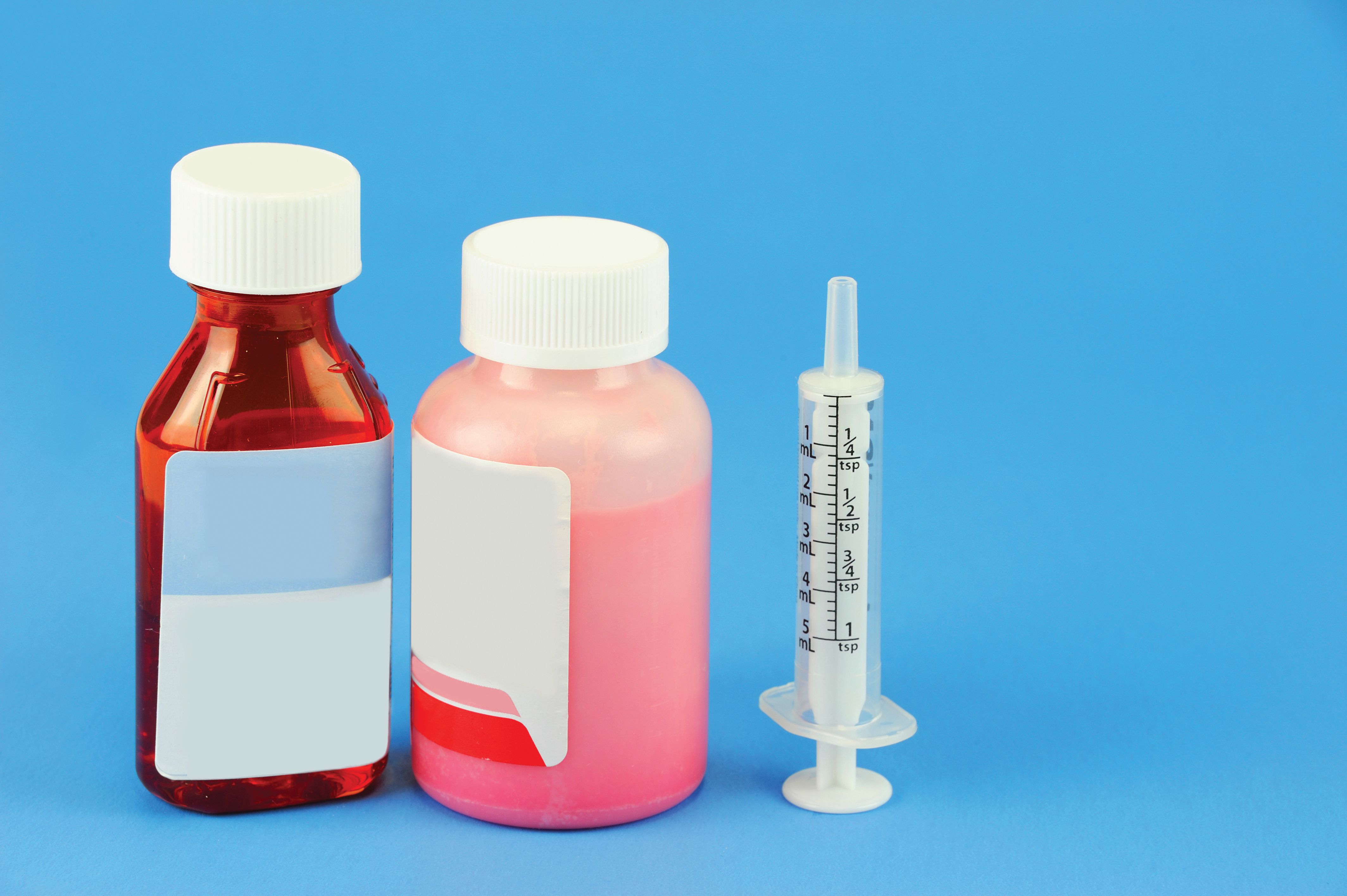Publication
Article
Pharmaceutical Technology
Improving Production: How IT, OT, and Quality Can Collaborate
Author(s):
To improve production in pharmaceutical manufacturing, the IT, OT, and Quality functional groups must work together to get the most value from existing plant data.
Victoria/stock.adobe.com

Editor’s Note: This article appears in the December 2018 issue of Pharmaceutical Technology Europe.
Ongoing pressures in the life-sciences industry require pharma and biotech manufacturers to fundamentally transform how they operate. For example, an annual decrease in operating budgets is now an established expectation in some companies, driven by reduced revenues and the need to prioritize investment in new product development. Previously, managers could cut costs to achieve these goals. Today, however, savings must be achieved through fundamental improvements to operations. Progressive companies are therefore looking to innovative manufacturing methods to enable these gains. Many of these methods require digital transformation, as well as the commitment to use data that already exist within many facilities to establish new operating modes.
Cross-functional collaboration
This journey requires collaboration between information technology (IT) and operational technology (OT), in both the systems and the staff in these organizations. A survey of industry members found that 77% of respondents believe that this collaboration is important to digital transformation success (1).
Systems and data that have traditionally resided in one domain or the other must now be bridged transparently so that they can be used to optimize business processes across all functions. In addition, companies must go a step further to ensure that the data can be used to improve quality and regulatory compliance, and that the methods used to retrieve and share information will help mitigate cybersecurity threats.
Collaboration among IT, OT, and quality provides an opportunity to remove silos between different groups, preventing isolated manufacturing applications. For example, IT/OT collaboration allows for alignment between maintenance, operational activities, and planning so that data (e.g., equipment maintenance records, batch manufacturing records, and out-of-spec quality lab results) can be correlated across processes with context. It can also prevent the need for time-wasting, error-prone activities such as data re-entry.
Removing this friction allows operators and managers to gain access to plant-level information and leverage that data to improve overall manufacturing and quality management. At all levels, they can collect and integrate data from isolated functional systems and siloed work processes, analyzing information to support decisions and improve workflow. Wireless architectures offer a low-cost means for gathering data, adding new data points, and deploying that information safely and economically so that it gets to the right people at the right time.
Taking this approach also enables the use of predictive analytics for advanced decision making, which can drive process quality improvements; reduce offline testing; use predictive maintenance to improve asset usage; enable shorter time-to-market by accelerating technology transfer; and allow more effective process engineering via simulation.
Predicting equipment performance and reliability becomes even more crucial in continuous manufacturing, where production scale is reduced and the process must respond accurately to the variations created in smaller-scale, flexible operations. Cloud-based predictive analytics and digital twin simulations, which simulate an entire system or plant, can help create the precise, predictable production needed to enable continuous manufacturing.
Knowledge management
As more experienced workers leave the industry, cost pressures often mean they are not being replaced at all, or they are being replaced by staff with less experience. To support next-gen workers, part of the solution is to have less dependence on individual experience and more dependence on data, information, and operational knowledge management embedded in IT and OT solutions. Knowledge management embedded in systems augments decision-making abilities by providing people access to best practices, original data, and the information required for good decisions at their fingertips. Because many new systems and supporting technology might reside outside traditional plant networks, integrated IT/OT solutions are required before operational teams can be given the actionable information they need.
Challenges to IT and OT collaboration
Currently, some obstacles may be making it difficult for companies to undergo the kind of transformation required. Some companies consider Industrial Internet of Things (IIOT) to be the foundation for digital transformation. However, a survey (2) suggests a need to more closely align IIoT pilots with business objectives. According to the survey (2), 60% of respondents were exploring or investing in IIoT pilot projects, but only 5% said they were investing against a clear business case for how to best implement the technology. Another problem, which amplifies the challenges, is that these projects were often not assigned a clear functional owner within the business-28% of respondents cited operations as leaders in IIoT, followed by IT and engineering at 24% each.
Another barrier to embracing digital transformation is the fact that some technologies that can produce step changes, such as predictive analytics, large-scale data aggregation and contextualization, and lightweight interconnection protocols-well established in other industries-are still relatively new concepts to the life-sciences industry. Many professionals are uncertain as to how technology changes will be impacted by regulatory validation requirements. Even though global regulatory agencies, such as the US Food and Drug Administration and the European Medicines Agency, are encouraging manufacturers to adopt technical innovation to improve product quality and supply chain reliability, some manufacturers still take a conservative approach to change.
Yet another obstacle to adopting transformative technology is the fact that the quality control and assurance functions are often isolated from the IT and OT groups within life-sciences companies, making changes more complex to implement. Although some companies have quality stakeholders embedded within IT and OT, others struggle with ensuring the right level of quality participation in digital transformation discussion and design.
There is usually a clear distinction between IT and OT infrastructure, based on differences in criticality and risk (e.g., OT’s need for reliable production and IT’s need for periodic updates, see Figure 1). IT and OT systems are often either completely isolated or at least severely restricted in terms of how they can share data. Across global supply chains, systems often are not harmonized across manufacturing sites, resulting in a patchwork of systems and data that is difficult to navigate. Enabling transparent data across these infrastructures requires a clear understanding of their impact on security and regulatory requirements.
All of these obstacles make it even more challenging to increase production and reduce operating expenses. Sustaining annual productivity improvements over several years often requires a paradigm shift in manufacturing work processes, which, in turn, requires capital investments outside the traditional annual budgeting process. Investors and stakeholders often focus on short-term results, while the returns for these improvements take several years to materialize, making them hard to justify. The tasks are difficult, but a path forward does exist, and the end results are well worth the work.
Figure 1: The information technology (IT) and operational technology (OT) organizations must leverage complementary strengths to extract real business value from digital transformation. Figure is courtesy of the authors.

Four ways to bring quality, IT, and OT together
The most important element in creating collaboration across domains is having engaged, executive-level sponsorship. Although a consolidated structure is optimal, just having one key business executive drive unification across the quality, IT, and OT organizations around business imperatives is crucial to helping overcome fear of change.
However, change needn’t start from the top, and can also be initiated from the grass-roots level. It’s the local site quality personnel, operators, and engineers who can provide the most pragmatic insights. In the end, site managers are responsible for daily, weekly, and monthly operations that yield the improvements that leadership needs to meet the business imperatives-whether it’s lowering annual operating costs by 4% or increasing annual production by 5%, for example.
The following best practices can help to bring an organization together:
Understand the business objective. A good strategy for digital transformation will include business drivers and enablers. Drivers look at capabilities and performance relative to industry benchmarks in key areas, such as production management, reliability and maintenance, safety and security, and/or quality and compliance. Enablers are the capabilities for organizational effectiveness that enable integration of systems and data. All levels of the organization must understand the business objective and bring in all stakeholders (regulatory, quality, policies and framework, OT, and IT) to show the value of change.
Be an OT technology advisor and expert. Enablers must be set in place. For example, a site’s packaging supervisor can identify the inefficiencies or liabilities that come from re-keying data into disparate systems or from multiple redundant transactions. The maintenance department can identify historical trends in work orders and equipment downtimes. The quality team can provide insights on required improvements in corrective and preventive actions. Site-level personnel understand the systems in place as well as the deficiencies that block the organization from achieving business objectives. OT stewards help the organization explore business enablers by providing practical expertise in both existing and emerging technology.
Collaborate across functions. Regardless of their position in the company hierarchy, people can reach across functions-while understanding their own challenges and resistances-to better collaborate and anticipate solutions that achieve multiple groups’ goals. For example, if an organization experiences operational delays, quality excursions, and/or lost batches due to equipment problems, the maintenance group can help the IT and quality groups understand the digitally-enabled power of predictive maintenance and prescriptive analytics, which can improve overall equipment effectiveness, personnel productivity, maintenance practices, and product quality. Reaching across functions, teams can remove resistance to change by focusing on the business opportunity. Figure 1 shows the important functions that IT and OT groups contribute to overall digital transformation.
Build for success and scale, not size. Many organizations think that digital transformation is a massive endeavor and requires a massive project. On the contrary, successful digital transformations can start with pilot projects at the unit or site level that can scale into plant-wide and even enterprise-wide capabilities. In fact, the best cases for pilot projects are often operational units that underperform. Site level teams can be the most efficient way to determine opportunities to achieve quick and significant results. They can be especially effective when they work within IT guidelines and standards.
Recently, a life-sciences company engaged in such a pilot at the local level and demonstrated significant value at one of its sites. After this success, the site and software vendor partnered to engage the corporate IT department to review the solution, business value, and fit with global IT architecture standards. This vetting and incorporation of the solution into architecture standards enabled additional sites to roll out the solution quickly on similar processes. Although a better approach would have been to include IT during the initial proof of concept, they were able to prove the solution on a small scale and then scale up by leveraging a standardized IT infrastructure as they put OT and enterprise IT personnel on the same page.
Conclusion
In summary, life-sciences companies should neither be deterred by what can seem to be a gargantuan task, nor blindly accept the status quo. Today, pharmaceutical companies can choose a small-to-moderate-size project that ties to business goals and can generate success. Starting with proof of value, companies can demonstrate concrete business outcomes such as improved cycle time or asset reliability, then expand to other projects and eventually scale across the enterprise.
The business incentives for change are already there. With determined cooperation among the quality, IT, and OT groups, enterprises can make strides within the next few years. Other industries have demonstrated significant advantages in production and cost savings by using data from assets to implement a predictive versus time-based maintenance programme, which has been dominant in the life-sciences industry. Adopting the newer techniques has been shown to lead to 5–10% improvements in asset availability, and similar or greater gains can be found in other domains such as production, safety, and quality.
BioPhorum’s model of digital plant maturity levels-from a level one “pre-digital” plant using manual, paper-based processes up to a level five “adaptive” plant that is autonomous and self-optimizing-is a good start in developing a benchmarking tool to gage an organization’s progress toward digital plant maturity (3) and working on a roadmap for digital transformation.
Life-sciences companies that get IT, OT, and quality groups to collaborate and who drive successful adoption of new approaches will enhance their digital capabilities and overall performance, from plant floor operations to enterprise profitability.
References
1. Emerson, Emerson Digital Transformation Report (2018).
2. Emerson and Industry Week, Survey on Industrial IoT (2018).
3. BioPhorum Operations Group, “A Best Practice Guide to Using the BioPhorum Digital Plant Maturity Model and Assessment Tool,” www.biophorum.com/digital-plant-maturity-model-v-2/, accessed 6 Nov. 2018.
Article Details
Pharmaceutical Technology Europe
Vol. 30, No. 12
December 2018
Page: 34–37
Citation
When referring to this article, please cite it as W. Goetz and R. Rossbach, "Improving Production: How IT, OT, and Quality Can Collaborate," Pharmaceutical Technology Europe 30 (12) 2018.
About the Authors
Will Goetz is vice-president of Digital Transformation Practice, will.goetz@emerson.com, and Ron Rossbach is Life Sciences Consultant, ron.rossbach@emerson.com, both at Emerson.

Newsletter
Get the essential updates shaping the future of pharma manufacturing and compliance—subscribe today to Pharmaceutical Technology and never miss a breakthrough.





